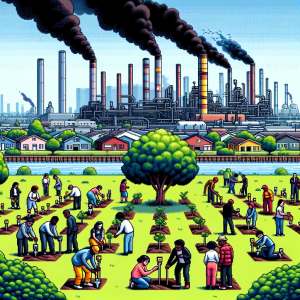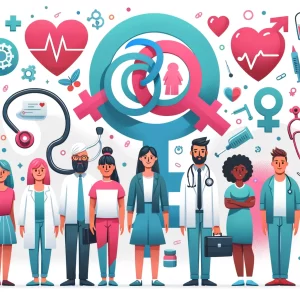
Building the Cities of Tomorrow
Imagine a future where cities breathe cleaner air, where hospitals harness artificial intelligence (AI) to provide personalized care, and where construction reduces carbon footprints instead of inflating them. This is not a sci-fi utopia—it’s the promise of smart cities, AI-driven healthcare, and low-carbon building materials. But as these innovations emerge, what do people really think about them? How ready are we to embrace the future?
A recent paper dives deep into these questions, blending public perceptions with cutting-edge AI research. Here’s what you need to know.
What Are Smart Cities? A Quick Primer
Smart cities are urban areas designed to optimize resources and improve quality of life through technology. They use data to manage transportation, energy, and even waste more efficiently. Think of traffic lights that adjust to real-time congestion or energy grids that prioritize renewable power. These systems promise greener living, but public buy-in is crucial for success.
In the study, 80% of survey participants were aware of smart cities, and 60% believed they positively impact the environment. That optimism bodes well for urban planners, but it also underscores the need for clear communication to address the remaining doubts.
AI in Healthcare
AI is revolutionizing medicine, from diagnosing diseases through imaging to planning personalized treatments. Yet, it’s not without controversy. While 70% of survey respondents knew about AI’s role in healthcare, only 45% believed it benefits the environment. This split highlights the public’s hesitations about energy-intensive AI technologies and privacy risks.
However, AI has immense potential to align with sustainability goals. For example, by predicting disease trends, AI can help governments allocate resources more efficiently, reducing waste in the healthcare system. The challenge lies in bridging the knowledge gap and showing people how AI can do more good than harm.
Low-Carbon Building Materials: A Path to Cleaner Living
The construction industry is a significant contributor to greenhouse gas emissions, but low-carbon building materials are offering solutions. These materials use fewer resources and emit less carbon throughout their lifecycle. From recycled composites to reflective roofs that combat urban heat, the options are growing—and people are taking note.
Sixty percent of survey respondents said they’d pay more for eco-friendly materials, while 65% recognized their environmental benefits. This willingness to invest is a promising sign for sustainable urban development.
A Deeper Dive: AI Meets Green Construction
The study also tested how convolutional neural networks (CNNs)—a type of AI—can enhance the construction industry. By analyzing images of building materials, CNNs accurately predicted their performance, helping architects and engineers choose options that maximize sustainability.
For example, AI can recommend materials with better thermal properties, reducing energy use in buildings. It can even model entire city blocks, forecasting how design changes could lower carbon emissions. This integration of AI and construction doesn’t just promise greener cities—it demonstrates the practical applications of complex technologies in solving real-world problems.
Why It Matters for Public Health
What does all this mean for our health? The link between smart technologies, sustainable materials, and public health is clear. Reduced emissions lead to cleaner air, lowering rates of respiratory illnesses. AI-powered medical systems can catch diseases earlier, improving outcomes while cutting costs. And green building materials enhance indoor air quality, creating healthier homes and workplaces.
But these innovations also raise questions about equity. Who gets access to these benefits? Can AI widen disparities in healthcare if it’s only available in wealthy cities? Ensuring inclusivity must be a priority as these technologies evolve.
What’s Next?
While the findings are encouraging, the journey is far from over. Here are some key steps moving forward:
- Education and Advocacy: Many people remain skeptical of AI’s environmental benefits. Campaigns that simplify and clarify its positive impacts could improve trust and adoption.
- Policy Development: Governments should incentivize the use of low-carbon materials and regulate AI applications to ensure ethical use and equitable access.
- Collaborative Innovation: Partnerships between tech developers, urban planners, and public health professionals can maximize the impact of these technologies while addressing potential risks.
Join the Conversation
What excites you most about the possibilities of smart cities, AI in healthcare, or low-carbon building materials? What concerns do you have about their impact on equity or the environment? Share your thoughts in the comments or join us on social media to continue the discussion.
Let’s imagine—and build—a future where technology and sustainability go hand in hand for the betterment of all.
Be a Changemaker – Join Us Today!
Stay ahead of the latest public health developments. Subscribe for free now to receive weekly updates that empower you to lead and create impact.
💡 Every moment counts! Share this blog and invite others to take action for a healthier tomorrow.



